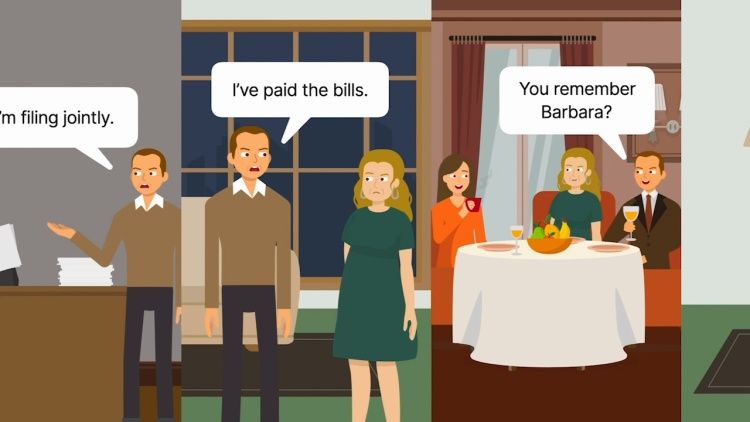Marriage of Baragry
California Court of Appeal
140 Cal. Rptr. 779 (1977)
- Written by Maggy Gregory, JD
Facts
Mr. Baragry (plaintiff) and Mrs. Baragry (defendant) were married in 1956. On August 4, 1971, Mr. and Mrs. Baragry had an argument, and Mr. Baragry, an eye surgeon, went and stayed on his boat for a time, before moving into an apartment with his girlfriend. From that date forward, Mr. and Mrs. Baragry did not have a sexual relationship. However, Mr. Baragry continued to keep his mailing address at the marital home, continued to eat dinner at the marital home almost every night, and continued to take family and marital vacations as well as attend social and professional outings for doctors and their wives accompanied by Mrs. Bargary. Mr. Baragry continued to pay all of the household expenses, filed his taxes jointly with Mrs. Baragry, was registered to vote with the marital home address, and brought his laundry to Mrs. Baragry, who washed and ironed it for him. At no time during the years of this arrangement did Mr. Baragry ever tell Mrs. Baragry that he did not intend to reconcile with her. Mrs. Baragry continued to hope for reconciliation with Mr. Baragry. Mr. Baragry filed for divorce on October 14, 1975. The trial court found that the date of separation, at which point Mr. Baragry's earnings would no longer be considered community property, occurred on August 4, 1971. Mrs. Baragry appealed the trial court's decision.
Rule of Law
Issue
Holding and Reasoning (Fleming, J.)
What to do next…
Here's why 899,000 law students have relied on our case briefs:
- Written by law professors and practitioners, not other law students. 47,000 briefs, keyed to 994 casebooks. Top-notch customer support.
- The right amount of information, includes the facts, issues, rule of law, holding and reasoning, and any concurrences and dissents.
- Access in your classes, works on your mobile and tablet. Massive library of related video lessons and high quality multiple-choice questions.
- Easy to use, uniform format for every case brief. Written in plain English, not in legalese. Our briefs summarize and simplify; they don’t just repeat the court’s language.





